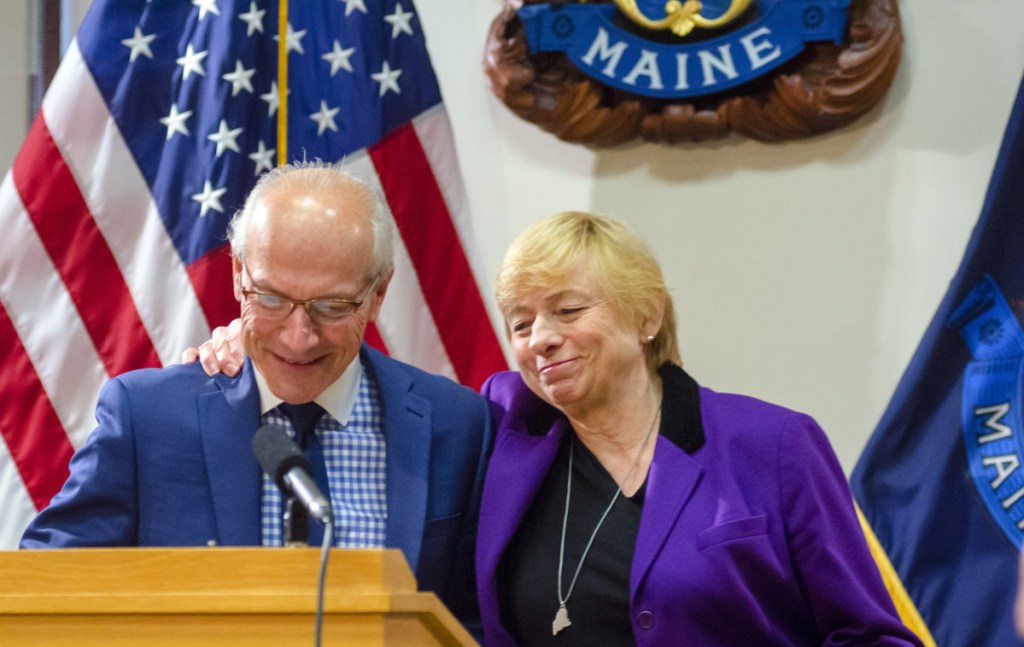The people of Maine should be mad as hell after Gov. Janet Mills on Wednesday issued an executive order on the opioid crisis.
Not about the order itself — that contains a series of well-thought-out initiatives aimed at preventing and treating both addiction and drug overdoses.
No, what people should be angry about is how easy it was. With a stroke of a pen, and using funds available for just this purpose, Mills put in motion initiatives that will certainly save lives immediately — and could save them for years to come.
Paul LePage, governor until Mills took over a little more than a month ago, could have done the same at any time. But for a variety of reasons — a severe misunderstanding of addiction, a lack of compassion for the addicted, a complete allergy to compromise and spending — he did not, even as the epidemic took the life of one Mainer a day.
It’s not like the actions Mills has taken so far to address the crisis have been radical. The executive order spells out how $1.6 million in state and federal funding will be used to buy and distribute 35,000 doses of the overdose-reversing drug naloxone and to train 250 recovery coaches to help guide people through addiction treatment.
The order directs the director of opioid response, Gordon Smith, in a new position Mills created, to integrate medication-assisted treatment — the most effective form of treatment — into the criminal justice system, where it is very much needed, and it establishes a working group to identify and spread across the state the best ways to prevent opioid use among young Mainers.
The order also directs Smith to integrate medication-assisted treatment into the “hub and spoke” model of care and support services, which has worked well in other states.
Perhaps most important, Smith will coordinate the response to the opioid crisis across all state agencies. He will attempt to wrangle what has been a piecemeal response across the state, with law enforcement, treatment advocates and health care providers at all levels taking actions independently and together as the opioid crisis bloomed.
And Mills, on her first full day in office, expanded Medicaid to tens of thousands of low-income residents, a move that in other states has helped ease the addiction crisis.
Next, the governor said, she’ll work through legislation to lift the 24-month cap on medication-assisted treatment for Medicaid and raise reimbursement rates for providers, reversing two early LePage actions that added fuel to what was at the time a still-nascent epidemic.
Each of those ideas has been around for a while. They’ve found success in states that have managed to make headway in the opioid crisis, such as by decreasing the number of overdose deaths and by increasing access to treatment. Many were touted by two task forces on addiction that were convened in Maine but whose efforts were largely ignored by the LePage administration.
LePage focused instead on cutting opioid prescriptions, which was successful, and increasing enforcement and criminal penalties, which has not made a dent in the drug problem.
He rejected the rest, denying that there was a treatment shortage when there clearly was, and working hard to keep naloxone out of the hands of people who needed it. As a result, Mainers suffered and died.
It’s too early to tell whether Mills will be able to reverse what is now an entrenched epidemic. But her actions so far shows that she will do what it takes — and that’s a marked change from the last eight years.
Copy the Story LinkSend questions/comments to the editors.



Success. Please wait for the page to reload. If the page does not reload within 5 seconds, please refresh the page.
Enter your email and password to access comments.
Hi, to comment on stories you must . This profile is in addition to your subscription and website login.
Already have a commenting profile? .
Invalid username/password.
Please check your email to confirm and complete your registration.
Only subscribers are eligible to post comments. Please subscribe or login first for digital access. Here’s why.
Use the form below to reset your password. When you've submitted your account email, we will send an email with a reset code.